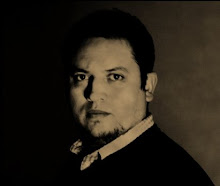My first ICHC (Berne’s ICHC2007)

My first International Conference on the History of Cartography (ICHC), which was held in Berne in its 22nd version (ICHC2007), was greatly interesting; after all this was a rare (occurring only once in two years) opportunity to meet some of the most active historians of cartography worldwide…. and I’m doing it for the first time.
I was particularly glad to meet and/or listen to talks by Tony Campbell, Peter Barber, Catherine Delano Smith, Mary Sponberg Pedley, Joaquim Alves Gaspar, Philippe Foret, Zsolt Torok, Chet Van Duzer, Sandra Saenz-Lopez Perez, Matthew Edney, and Angelo Cattaneo. I was hoping to meet or listen to even more of the more-than-60 presenters and the even larger number of participants but the disruption caused by the loss of my luggage made me miss many of them (for a full volume compiling the papers and posters abstracts see here; for a pocket program see here). I was also impressed by the level of organization of our Swiss hosts with a special note to the notable organizational skills of Hans-Uli Feldmann. Also I’d like to give special thanks to the technicians of the conference especially those who had to deal with (as usual) the last-minute changes of my ppt. presentation.
I was really happy with the reception my talk (see summary below) got notably the questions and comments from the audience during and, even, following the session; a discussion that continued without stop including during an unusual Bernese dinner: with laptops over the dinner table.
Finally I would have been even gladder if the panel proposal on a special session on Islamic cartography I submitted would have been accepted. While mine was this time the only paper on the field of Islamic cartography it would have been really interesting if my friends and colleagues Andreas Kaplony, Yossi Rappoport, Iffet Orbay, and Karen Pinto were also there to present their highly valuable research (which unfortunately was not possible partly for time conflicts). I think, as many others, that this field is entitled to have more than one paper in an ICHC. It is fair to assume, however, that perseverance and a good panel proposal (better than the lousy one I did last time) might convince the next conference’s selection committee (Copenhagen’s ICHC2009) to include a special session on Islamic cartography. Let’s hope so!
MY PAPER’S ABSTRACT
On a Western Islamic School of Mediterranean Navigational knowledge and Mapmaking in the late medieval period (12th-16th centuries)
The topic of late medieval Mediterranean navigation and mapmaking is usually discussed with no need of mentioning Islamic sources. Obviously one of the reasons is the existing written and cartographic sources on the subject, which are overwhelmingly European. Various trends in the scholarship of Mediterranean and Islamic histories argued that the coasts of the Mediterranean towards the late medieval period were increasingly unknown by a Muslim population that was retracting from the sea; also that such coasts were not mapped by medieval Muslims independently from the European cartographers. A widely shared belief is generated from such representation: a late medieval European Mediterranean.
However, some largely unstudied, though not totally unknown, cartographic sources point to a different story. Even though they are few they provide a great amount of new clues proving that the idea of a late medieval European Mediterranean does not reflect the reality of a more complicated and hybrid sea. A very strong link could be seen in a series of Islamic cartographic sources made by authors from the Western Mediterranean beginning from the 12th century al-Idrisi to the 16th century al-Sharfi. They reflect a school of maritime knowledge that expanded its influence to the eastern Islamic lands by providing the best Muslim sailors and cartographers of the Mediterranean. Also their legacy was one of the sources of the early modern mighty Ottoman navy in the Mediterranean and its cartographic school.

